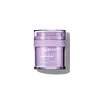What's inside
What's inside
 Key Ingredients
Key Ingredients

 Benefits
Benefits

 Concerns
Concerns

 Ingredients Side-by-side
Ingredients Side-by-side

Water
Skin ConditioningCitrullus Lanatus Fruit Extract
Skin ConditioningGlycerin
HumectantDimethicone
EmollientButylene Glycol
HumectantPhenyl Trimethicone
Skin ConditioningSorbitol
HumectantMoringa Oleifera Seed Oil
EmollientHamamelis Virginiana Leaf Extract
Skin ConditioningHydrangea Serrata Leaf Extract
Skin ConditioningAloe Barbadensis Leaf Extract
EmollientCeramide 3
Skin ConditioningSodium Hyaluronate
HumectantMel Extract
MoisturisingActinidia Chinensis Fruit Extract
EmollientMorus Alba Leaf Extract
Skin ConditioningSolanum Melongena Fruit Extract
Skin ConditioningButyrospermum Parkii Butter
Skin ConditioningCurcuma Longa Root Extract
MaskingCoral Extract
Skin ConditioningOcimum Basilicum Leaf Extract
Skin ConditioningPhytosphingosine
Skin ConditioningGlucose
HumectantTocopherol
AntioxidantHydrogenated Lecithin
Emulsifying1,2-Hexanediol
Skin ConditioningTrehalose
HumectantHydroxyacetophenone
AntioxidantPolyacrylate Crosspolymer-10
SolventTromethamine
BufferingAmmonium Acryloyldimethyltaurate/Vinyl Formamide Copolymer
Emulsion StabilisingGlyceryl Acrylate/Acrylic Acid Copolymer
HumectantCaprylyl Glycol
EmollientOctyldecanol
EmollientWater, Citrullus Lanatus Fruit Extract, Glycerin, Dimethicone, Butylene Glycol, Phenyl Trimethicone, Sorbitol, Moringa Oleifera Seed Oil, Hamamelis Virginiana Leaf Extract, Hydrangea Serrata Leaf Extract, Aloe Barbadensis Leaf Extract, Ceramide 3, Sodium Hyaluronate, Mel Extract, Actinidia Chinensis Fruit Extract, Morus Alba Leaf Extract, Solanum Melongena Fruit Extract, Butyrospermum Parkii Butter, Curcuma Longa Root Extract, Coral Extract, Ocimum Basilicum Leaf Extract, Phytosphingosine, Glucose, Tocopherol, Hydrogenated Lecithin, 1,2-Hexanediol, Trehalose, Hydroxyacetophenone, Polyacrylate Crosspolymer-10, Tromethamine, Ammonium Acryloyldimethyltaurate/Vinyl Formamide Copolymer, Glyceryl Acrylate/Acrylic Acid Copolymer, Caprylyl Glycol, Octyldecanol
Water
Skin ConditioningGlycerin
HumectantTetrahexyldecyl Ascorbate
AntioxidantDimethicone
EmollientPolyacrylamide
4-Butylresorcinol
AntioxidantHexapeptide-2
BleachingAllantoin
Skin ConditioningHydrolyzed Brassica Napus Seedcake Extract
Skin ConditioningTremella Fuciformis Sporocarp Extract
AntioxidantSqualane
EmollientDipotassium Glycyrrhizate
HumectantPentylene Glycol
Skin ConditioningButylene Glycol
HumectantDimethicone Crosspolymer
Emulsion StabilisingC13-14 Isoparaffin
EmollientCeramide NP
Skin ConditioningCeramide AP
Skin ConditioningCeramide EOP
Skin ConditioningLinoleic Acid
CleansingLinolenic Acid
CleansingPhytosphingosine
Skin ConditioningCholesterol
EmollientSodium Lauroyl Lactylate
EmulsifyingXanthan Gum
EmulsifyingCarbomer
Emulsion StabilisingCetearyl Olivate
Sorbitan Olivate
EmulsifyingLaureth-7
EmulsifyingCaprylyl Glycol
EmollientHexylene Glycol
EmulsifyingEthylhexylglycerin
Skin ConditioningPhenoxyethanol
PreservativeWater, Glycerin, Tetrahexyldecyl Ascorbate, Dimethicone, Polyacrylamide, 4-Butylresorcinol, Hexapeptide-2, Allantoin, Hydrolyzed Brassica Napus Seedcake Extract, Tremella Fuciformis Sporocarp Extract, Squalane, Dipotassium Glycyrrhizate, Pentylene Glycol, Butylene Glycol, Dimethicone Crosspolymer, C13-14 Isoparaffin, Ceramide NP, Ceramide AP, Ceramide EOP, Linoleic Acid, Linolenic Acid, Phytosphingosine, Cholesterol, Sodium Lauroyl Lactylate, Xanthan Gum, Carbomer, Cetearyl Olivate, Sorbitan Olivate, Laureth-7, Caprylyl Glycol, Hexylene Glycol, Ethylhexylglycerin, Phenoxyethanol
 Reviews
Reviews

Ingredients Explained
These ingredients are found in both products.
Ingredients higher up in an ingredient list are typically present in a larger amount.
Butylene Glycol (or BG) is used within cosmetic products for a few different reasons:
Overall, Butylene Glycol is a safe and well-rounded ingredient that works well with other ingredients.
Though this ingredient works well with most skin types, some people with sensitive skin may experience a reaction such as allergic rashes, closed comedones, or itchiness.
Learn more about Butylene GlycolCaprylyl Glycol is a humectant and emollient, meaning it attracts and preserves moisture.
It is a common ingredient in many products, especially those designed to hydrate skin. The primary benefits are retaining moisture, skin softening, and promoting a healthy skin barrier.
Though Caprylyl Glycol is an alcohol derived from fatty acids, it is not the kind that can dry out skin.
This ingredient is also used as a preservative to extend the life of products. It has slight antimicrobial properties.
Learn more about Caprylyl GlycolDimethicone is a type of synthetic silicone created from natural materials such as quartz.
What it does:
Dimethicone comes in different viscosities:
Depending on the viscosity, dimethicone has different properties.
Ingredients lists don't always show which type is used, so we recommend reaching out to the brand if you have questions about the viscosity.
This ingredient is unlikely to cause irritation because it does not get absorbed into skin. However, people with silicone allergies should be careful about using this ingredient.
Note: Dimethicone may contribute to pilling. This is because it is not oil or water soluble, so pilling may occur when layered with products. When mixed with heavy oils in a formula, the outcome is also quite greasy.
Learn more about DimethiconeGlycerin is already naturally found in your skin. It helps moisturize and protect your skin.
A study from 2016 found glycerin to be more effective as a humectant than AHAs and hyaluronic acid.
As a humectant, it helps the skin stay hydrated by pulling moisture to your skin. The low molecular weight of glycerin allows it to pull moisture into the deeper layers of your skin.
Hydrated skin improves your skin barrier; Your skin barrier helps protect against irritants and bacteria.
Glycerin has also been found to have antimicrobial and antiviral properties. Due to these properties, glycerin is often used in wound and burn treatments.
In cosmetics, glycerin is usually derived from plants such as soybean or palm. However, it can also be sourced from animals, such as tallow or animal fat.
This ingredient is organic, colorless, odorless, and non-toxic.
Glycerin is the name for this ingredient in American English. British English uses Glycerol/Glycerine.
Learn more about GlycerinPhytosphingosine is a phospholipid naturally found in our skin as a building block for ceramides.. It helps moisturize, soothe, and protect skin.
Phytosphingosine contributes to your skin's natural moisturizing factor (NMF). The NMF is responsible for hydration, a strong barrier, and plasticity. Our NMF decreases with age. Increasing NMF leads to more healthy and hydrated skin.
Studies show products formulated with NMF ingredients help strengthen our skin's barrier. Having a healthy skin barrier reduces irritation and increases hydration. Our skin barrier is responsible for having plump and firm skin. It also helps protect our skin against infection, allergies, and inflammation.
Fun fact: Phytosphingosine is abundant in plants and fungi.
More ingredients that help boost collagen in skin:
Learn more about PhytosphingosineWater. It's the most common cosmetic ingredient of all. You'll usually see it at the top of ingredient lists, meaning that it makes up the largest part of the product.
So why is it so popular? Water most often acts as a solvent - this means that it helps dissolve other ingredients into the formulation.
You'll also recognize water as that liquid we all need to stay alive. If you see this, drink a glass of water. Stay hydrated!
Learn more about Water